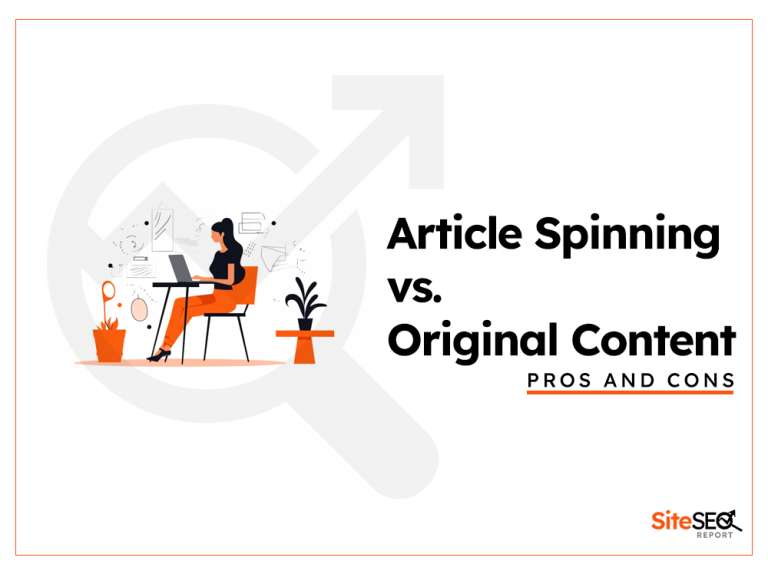Keywords are the backbone of search engine optimization (SEO).
They help websites rank higher on search engines, leading to increased visibility and traffic. However, not all keywords are created equal.
There are standard keywords, LSI (Latent Semantic Indexing) terms, and long-tailed keywords.
Understanding the distinction between these is vital for an effective SEO strategy.
The Essence of Keywords
At the core of every search is a keyword. These are single words or basic phrases that users input into search engines. They can be broad and can bring a lot of traffic, but the specificity and user intent may not always be clear.
Example: Shoes
Unveiling LSI (Latent Semantic Indexing)
LSI terms are related words or phrases that are contextually related to the main keyword. They’re not necessarily synonyms but are terms that often go hand-in-hand with the primary keyword. Search engines like Google use LSI terms to understand the content’s context better. Including LSI terms can make your content richer and more relevant.
Example: For the keyword “Shoes,” LSI terms might include Sneakers, Footwear, and Sandals.
Diving Deep with Long Tailed Keywords
Long-tailed keywords are longer, more specific keyword phrases. These keywords show a clear user intent. They might bring in less traffic than a more general keyword, but they bring in more qualified traffic, leading to higher conversion rates.
Example: Best running shoes for marathons
Why Use Different Keyword Types?
- Broad Reach vs. Specific Targeting: Regular keywords give you a broad audience, while long-tailed keywords target a specific group of users.
- Relevance & Context: LSI terms provide context, making your content more holistic and relevant.
- Conversion Potential: Long-tailed keywords, due to their specificity, often have a higher conversion rate.
Keyword Types in Action
Here’s a comparative table to give a clear perspective on these keyword types:
| Keywords | LSI | Long Tailed Keywords |
|---|---|---|
| Shoes | Sneakers, Footwear, Sandals | Best running shoes for marathons |
| Coffee | Latte, Espresso, Caffeine | Organic Arabica coffee beans online |
| Laptop | Notebook, Computer, Hardware | Gaming laptops under $1000 |
| Camera | DSLR, Megapixels, Lens | Best mirrorless cameras for travel |
| Watches | Timepiece, Analog, Digital | Luxury watches for men on sale |
| Books | Novels, Literature, Authors | Top mystery novels of 2023 |
| Cars | Automobiles, Vehicles, Sedan | Fuel-efficient hybrid cars in 2023 |
| Pizza | Toppings, Crust, Cheese | Gluten-free pizza delivery near me |
| Fitness | Workout, Exercise, Gym | Best home fitness routines for seniors |
| Travel | Vacation, Trip, Destinations | Budget-friendly European honeymoon packages |
| Music | Tunes, Melody, Genres | Relaxing acoustic playlists for studying |
| Furniture | Couch, Table, Decor | Ergonomic office chairs with lumbar support |
| Wine | Red, White, Vineyard | Best Californian wines for summer |
| Skincare | Moisturizer, Cleanser, Glow | Vegan skincare products for sensitive skin |
| Phones | Smartphones, iOS, Android | Top rated Android phones with long battery life |
| Baking | Oven, Recipe, Flour | Easy chocolate chip cookie recipes |
| Yoga | Asanas, Meditation, Flexibility | Morning yoga routines for beginners |
| Chocolate | Cocoa, Sweet, Dark | Handmade dark chocolate gifts |
| Gardening | Plants, Soil, Flowers | Winter vegetable gardening tips |
| Perfume | Fragrance, Scent, Eau de parfum | Long-lasting perfumes for women |
This table provides a clear distinction between generic keywords, related LSI terms, and the specific long-tailed keyword phrases.
Tips for Using These Keywords in Your SEO Strategy
- Research is King: Use tools like Google’s Keyword Planner, SEMrush, and Ahrefs to find relevant keywords and LSI terms.
- Natural Integration: While it’s essential to include these keywords, ensure they fit into your content naturally.
- Monitor and Adjust: SEO is dynamic. Regularly check your keyword strategy’s effectiveness and adjust as needed.
Frequently Asked Questions
What are keywords in the context of SEO?
Keywords are specific words or phrases that people enter into search engines. They help determine which websites are relevant to a user’s search query.
How do long-tailed keywords differ from regular keywords?
Long-tailed keywords are extended phrases, usually three words or more, that are very specific. While “shoes” is a broad keyword, “men’s waterproof hiking shoes” is a long-tailed keyword.
What is LSI (Latent Semantic Indexing)?
LSI stands for Latent Semantic Indexing. It refers to keywords that are semantically related to a primary keyword. For instance, for the keyword “book,” LSI keywords might include “author,” “publication,” and “pages.”
Why are long-tailed keywords important for my website?
Long-tailed keywords are crucial because they often have lower competition and cater to specific user intent. This specificity can lead to higher conversion rates as the content closely matches user queries.
How do I identify the right LSI keywords?
You can use tools like LSI Graph or explore Google’s “Searches related to” section at the bottom of search results to identify potential LSI keywords.
Can overusing LSI keywords harm my SEO?
Yes. Overstuffing your content with any keyword, LSI or not, can lead to penalties from search engines. It’s essential to maintain a natural flow and density in your content.
Is it necessary to focus on both LSI and long-tailed keywords?
While both have their merits, the primary focus should be on creating high-quality, relevant content. Using a mix of both can enhance visibility and relevance, but neither should be forced unnaturally into content.
How often should I update my keyword strategy?
The digital landscape is continually evolving. Regularly review and adjust your keyword strategy, at least quarterly, to ensure you’re aligned with current search trends and user behaviors.
Are there tools to help generate long-tailed keywords?
Absolutely! Tools like Ubersuggest, Ahrefs, and SEMrush offer robust keyword research features that can help identify potential long-tailed keyword opportunities.
How do I measure the success of my keyword strategy?
Utilize analytics tools like Google Analytics or other SEO tracking platforms. Monitor metrics like organic traffic, ranking improvements, conversion rates, and the overall visibility of specific keywords to gauge success.
Conclusion
In the ever-evolving landscape of SEO, understanding the various keyword types can give you an edge. By combining standard keywords with LSI and long-tailed keywords, you can create a robust SEO strategy that drives both traffic and conversions. Remember, it’s not just about quantity but the quality of traffic that makes the difference.






